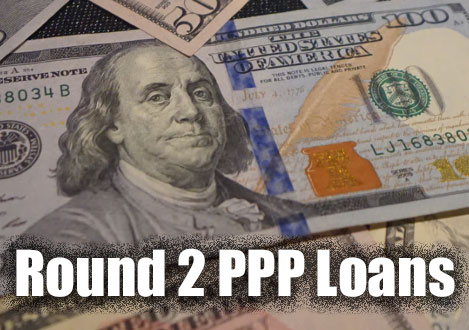 This article continues the series of PPP Loan matters. On April 2, 2020, the U.S. Small Business Administration (SBA) posted an interim final rule announcing the implementation of sections 1102 and 1106 of the Coronavirus Aid, Relief, and Economic Security Act (CARES Act). Section 1102 of the CARES Act temporarily adds a new program, titled the “Paycheck Protection Program,” to the SBA’s 7(a) Loan Program.[1] [2] On December 27, 2020, the Economic Aid to Hard-Hit Small Businesses, Nonprofits, and Venues Act (Economic Aid Act) (Pub. L. 116-260) became law. The Economic Aid Act extends the authority to make PPP loans through March 31, 2021 and revises certain PPP requirements. A $284 billion pool of money was established to help struggling businesses survive during the pandemic. The Economic Aid Act did not alter or affect the requirements applicable to PPP1 loans closed prior to its enactment unless provisions are identified in this rule. These interim final rules also apply to loan forgiveness applications submitted under the Paycheck Protection Program before enacting the Economic Aid Act where the borrower has not remitted the forgiveness payment.
This article continues the series of PPP Loan matters. On April 2, 2020, the U.S. Small Business Administration (SBA) posted an interim final rule announcing the implementation of sections 1102 and 1106 of the Coronavirus Aid, Relief, and Economic Security Act (CARES Act). Section 1102 of the CARES Act temporarily adds a new program, titled the “Paycheck Protection Program,” to the SBA’s 7(a) Loan Program.[1] [2] On December 27, 2020, the Economic Aid to Hard-Hit Small Businesses, Nonprofits, and Venues Act (Economic Aid Act) (Pub. L. 116-260) became law. The Economic Aid Act extends the authority to make PPP loans through March 31, 2021 and revises certain PPP requirements. A $284 billion pool of money was established to help struggling businesses survive during the pandemic. The Economic Aid Act did not alter or affect the requirements applicable to PPP1 loans closed prior to its enactment unless provisions are identified in this rule. These interim final rules also apply to loan forgiveness applications submitted under the Paycheck Protection Program before enacting the Economic Aid Act where the borrower has not remitted the forgiveness payment.
Borrowers who desire a PPP2 loan should pre-apply now using SBA Form 2483 since loan processing will begin on January 18, 2021. It is not necessary to have applied for first round PPP forgiveness before applying for the second loan. Lendio.com has a streamlined process to help borrowers that do not have lending relationships with their bank.
The new provisions allow borrowers that previously received and fully spent a PPP loan to apply for a second draw. To be eligible, borrowers must have no more than 300 employees and gross receipts during the first, second, and third quarter of 2020 to demonstrate a revenue reduction (gross receipts from all sources) of not less than 25%. This is computed by comparing the quarter of 2020 with the same quarter for 2019.
The first-round calculation for payroll used a factor of 2.5x payroll and still is, but if you are in the NAICS code starting with 72 (restaurants and hotel locations with a shared parent company that operate as separate legal businesses), 3.5x payroll can be used. Independent contractors should not be included in the payroll calculation because they can submit their own PPP request for funds. (Pg. 45)
The use of PPP2 funding has changed to at least 60% must be used for payroll costs. (Pg. 48 – 54) The remaining 40% can be used to cover some business expenses not allowed in PPP1, including mortgage interest, rent, utilities, and now business software or cloud computing that facilitates business operations, covered personal protective equipment, and other expenses incurred to meet government-imposed COVID restrictions, property damage from vandalism or looting during 2020 not covered by insurance, and covered supplier costs. Attention should be applied to the new authorized expenditures to assure compliance with the rules and later forgiveness of the loan.
Unlike larger loans that require borrowers to retain relevant supporting documentation for six years, for loans of up to $150,000, borrowers will only be required to retain applicable documents for four years, as to employment records, or three years as to other records. These changes are retroactive to the passage of the CARES Act. (Pg. 59)
The SBA rules for PPP loans are complicated. Do not be caught short. Plan ahead for the forgiveness, and be sure to contact your CPA or a qualified accountant for recordkeeping requirements.
If your law firm requires a forensic accountant as a consulting expert or a testifying expert witness regarding SBA PPP recordkeeping, tracing, or audit of PPP Loan proceeds, contact Chief Investigator Edmond Martin of Sage Investigations, LLC at 512-659-3179 or email him at edmartin@sageinvestigations.com. We offer a free 20-minute consult. Visit our website at www.Sageinvestigations.Com. Click to read about our team and their CVs.
[2] Federal Register Vol. 85, No 76 – Interim Final Rule


 Call
Call